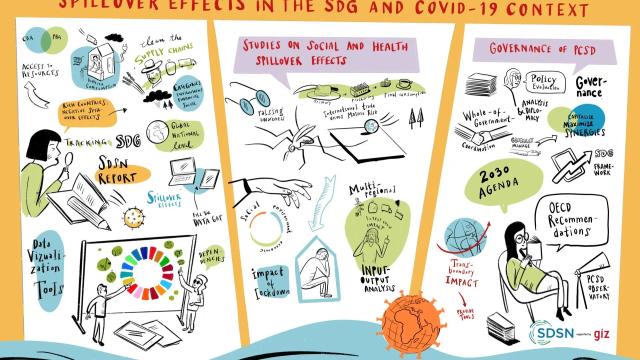Policy relevance of international spillover effects and Covid-19 in SDG reporting
With only 10 more years to go, the UN High-Level Political Forum on Sustainable Development (HLPF) is taking stock on the achievement of the Sustainable Development Goals (SDGs) in the decade of action. One crucial, but often neglected topic in the assessment of SDGs is the question of so-called "spillover effects" between countries as strategies to achieve the SDGs need to be implemented domestically without generating negative impacts on other countries restraining those in their path towards sustainable development.
International spillover effects are highly relevant in the current Covid-19 context. On the one hand, the health and economic crises call for increased solidarity and partnership. On the other hand, fixing unsustainable supply chains that lead to deforestation and other environmental and biodiversity threats will be key to prevent the outbreak of zoonotic diseases in the future and other disruptive health or climate events.
On July 02, SDSN and the GIZ hosted a webinar on the role of international spillover effects and implementing the SDGs in the context of the ongoing Covid-19 pandemic. During the webinar, Guillaume Lafortune (SDSN) introduced the results of their newly released Sustainable Development Report 2020 , including the SDG Index and the Spillover Index with the best available data on countries’ positive and negative external effects. His colleague Finn Woelm (SDSN) elaborated on the SDR spillover map as well as the Data Visualization Tool on bilateral spillovers funded by the Federal Ministry for Economic Cooperation and Development (BMZ). Dr. Arunima Malik from the University of Sydney presented a study on health spillover effects with regards to Covid-19 and provided a deeper look on multi-regional input-output tables that are used for sustainability assessments. A final input on policy recommendations and the coherence of domestic and international measures of spillover effects was given by Apollonia Miola from the OECD.
The event was accompanied by a graphic recording tool that accentuates the webinars’ outcomes and visually supported the input of the speakers. A recording of the event can be found here.
